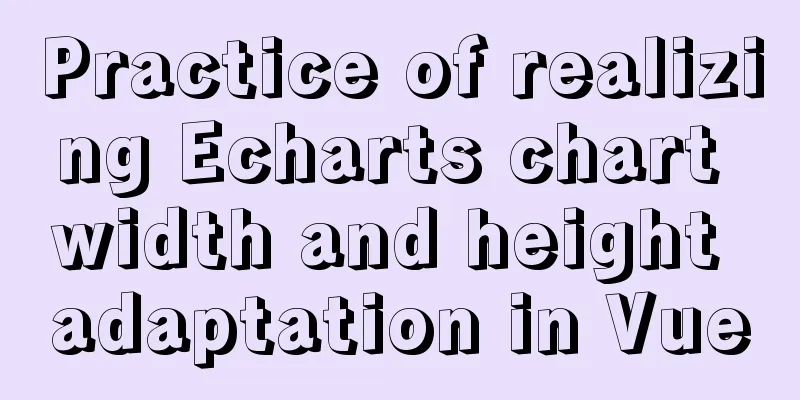Detailed explanation of how to use the canvas operation plugin fabric.js

|
Fabric.js is a very useful canvas operation plug-in. Here are some knowledge points used in daily projects:
//1: Get all objects on the canvas:
var items = canvas.getObjects();
//2: Set an object on the canvas as the active object.
canvas.setActiveObject(items[i]);
//3: Get the active object on the canvas canvas.getActiveObject()
//4: Cancel the selection of all objects in the canvas.
canvas.discardActiveObject();
//5: Set a property value of an object in the canvas, such as the ID of the 0th object
var items = canvas.getObjects();
items[0].id = "items_id0" or items[0].set("id","items_id0")
//6: Get a property of an object in the canvas, such as the ID of the 0th object
var items = canvas.getObjects();
items[0].id;
//or items[0].get("id");
//7: Re-render the canvas. When the objects in the canvas are changed, this operation needs to be performed once at the last display. canvas.renderAll()
//8: Clear all objects in the canvas:
canvas.clear();
//9: Clear the active object in the canvas:
var t = canvas.getActiveObject();
t && canvas.remove(t);
//10: Set the level of the active object in the canvas var t = canvas.getActiveObject();
canvas.sendBackwards(t) //jump down one layer canvas.sendToBack(t) //jump down to the bottom layer:
canvas.bringForward(t) //jump up one level:
canvas.bringToFront(t) // Jump to the top layer:
//or:
t.sendBackwards();
t.sendToBack();
t.bringForward();
t.bringToFront();
//10: When loading an image, scale the image to the specified size.
fabric.Image.fromURL(image_src, function(oImg) {
oImg.set({
left:tmp_left,
top:tmp_top,
centeredScaling:true,
cornerSize: 7,
cornerColor: "#9cb8ee",
transparentCorners: false,
});
oImg.scaleToWidth(image_width);
oImg.scaleToHeight(image_height);
canvas.add(oImg).setActiveObject(oImg);
});
//11: When an object in the canvas is selected, the object does not appear on the top layer.
canvas.preserveObjectStacking = true;
// 12: Add a background image to the canvas via URL var bg_url = "http://www.xxxx.com/...../bg.png"
fabric.Image.fromURL( bg_url , function(oImg) {
oImg.set({
width: canvas_obj.width,
height: canvas_obj.height,
originX: 'left',
originY: 'top'
});
canvas_obj.setBackgroundImage(oImg, canvas_obj.renderAll.bind(canvas_obj));
});
//13: originx: originy: represents the coordinate system.
//14: Center the canvas object:
var t = canvas.getActiveObject();
t.center(); //Center all t.centerH(); //Horizontal center t.centerV(); //Vertical center t.setCoords(); //Note: coords must be set for the above settings to be effective.
//15: When the object moves, limit the object to not exceed the canvas // canvas moving limit
function objectMoving(e){
var obj = e.target;
if (obj.currentHeight > obj.canvas.height || obj.currentWidth > obj.canvas.width) {
return;
}
obj.setCoords();
// top-left corner
if (obj.getBoundingRect().top < 0 || obj.getBoundingRect().left < 0) {
obj.top = Math.max(obj.top, obj.top-obj.getBoundingRect().top);
obj.left = Math.max(obj.left, obj.left-obj.getBoundingRect().left);
}
//bot-right corner
if(obj.getBoundingRect().top+obj.getBoundingRect().height > obj.canvas.height
|| obj.getBoundingRect().left + obj.getBoundingRect().width > obj.canvas.width){
obj.top = Math.min(obj.top, obj.canvas.height-obj.getBoundingRect().height+obj.top-obj.getBoundingRect().top);
obj.left = Math.min(obj.left, obj.canvas.width-obj.getBoundingRect().width+obj.left-obj.getBoundingRect().left);
}
}
//16: When the canvas object is enlarged, limit its operation beyond the boundary:
//Note that when creating an object on the canvas, you must first add:
obj.saveState();
//The method can be called when the object is modified.
function objectModified (e) {
let obj = e.target;
let boundingRect = obj.getBoundingRect(true);
if (boundingRect.left < 0
|| boundingRect.top < 0
|| boundingRect.left + boundingRect.width > obj.canvas.getWidth()
|| boundingRect.top + boundingRect.height > obj.canvas.getHeight()) {
obj.top = obj._stateProperties.top;
obj.left = obj._stateProperties.left;
obj.angle = obj._stateProperties.angle;
obj.scaleX = obj._stateProperties.scaleX;
obj.scaleY = obj._stateProperties.scaleY;
obj.setCoords();
obj.saveState();
}else{
obj.saveState();
}
}
//17: When the json object is generated, the background image is displayed.
fabric.Image.fromURL( bgImg, function(oImg) {
oImg.set({
width: 400,
height:400,
left:0,
top:0,
originX: 'left',
originY: 'top',
opacity:0
});
//When toObject method is used, the background image is displayed.
oImg.toObject = (function(toObject) {
return function() {
return fabric.util.object.extend(toObject.call(this), {
opacity:1
});
};
})(oImg.toObject);
canvas_obj.setBackgroundImage(oImg, canvas_obj.renderAll.bind(canvas_obj));
}, { crossOrigin: 'Anonymous' });
//18: Create a mask layer //Get the mask position properties (optional):
var maskLayerTop = parseInt($(this).attr("data-top"));
var maskLayerLeft = parseInt($(this).attr("data-left"));
var maskLayerWidth = parseInt($(this).attr("data-width"));
var maskLayerHeight = parseInt($(this).attr("data-height"));
//Create a mask var clipMask = new fabric.Rect({
originX: 'left',
originY: 'top',
left: maskLayerLeft,
top: maskLayerTop,
width: maskLayerWidth,
height: maskLayerHeight,
fill: 'rgba(0,0,0,0)',
strokeWidth:0,
selectable: false
});
clipMask.set({
clipFor: 'pug'
});
canvas_obj.add(clipMask);
function degToRad(degrees) {
return degrees * (Math.PI / 180);
}
function findByClipName(name){
return _(canvas_obj.getObjects()).where({
clipFor: name
}).first()
}
canvas_obj.clipByName = function(ctx) {
this.setCoords();
var clipObj = findByClipName(this.clipName);
var scaleXTo1 = (1 / this.scaleX);
var scaleYTo1 = (1 / this.scaleY);
var skewXReverse = - this.skewX;
var skewYReverse = - this.skewY;
ctx.save();
var ctxLeft = -( this.width / 2 ) + clipObj.strokeWidth;
var ctxTop = -( this.height / 2 ) + clipObj.strokeWidth;
var ctxWidth = clipObj.width - clipObj.strokeWidth;
var ctxHeight = clipObj.height - clipObj.strokeWidth;
ctx.translate( ctxLeft, ctxTop );
ctx.scale(scaleXTo1, scaleYTo1);
ctx.transform(1, skewXReverse, skewYReverse, 1, 0, 0);
ctx.rotate(degToRad(this.angle * -1));
ctx.beginPath();
ctx.rect(
clipObj.left - this.oCoords.tl.x,
clipObj.top - this.oCoords.tl.y,
clipObj.width,
clipObj.height
);
ctx.closePath();
ctx.restore();
}
//Where to call:
//Set the mask for the text layer var t = new fabric.Text("Your Text", {
id: first_level+"-text-input"+unique_id,
cornerSize: 7,
cornerColor: "#9cb8ee",
transparentCorners: false,
textAlign:"center",
clipName: 'pug',
clipTo: function(ctx) {
return _.bind(tmp_canvas_obj.clipByName, t)(ctx)
}
});
// Set the mask for the image layer:
// add the forntimage to the canvas
fabric.Image.fromURL(image_src, function(oImg) {
oImg.set({
id:first_level+"-image-input"+unique_id,
left:tmp_left,
top:tmp_top,
centeredScaling:true,
cornerSize: 7,
cornerColor: "#9cb8ee",
transparentCorners: false,
clipName: 'pug',
clipTo: function(ctx) {
return _.bind(tmp_canvas_obj.clipByName, oImg)(ctx)
}
});
//19: The generated image is scaled to the specified size.
oImg.scaleToWidth(image_width);
oImg.scaleToHeight(image_height);
//20: Add id attribute when to object.
oImg.toObject = (function(toObject) {
return function() {
return fabric.util.object.extend(toObject.call(this), {
id: this.id,
});
};
})(oImg.toObject);
oImg.id = first_level+"-image-input"+unique_id;
oImg.saveState();
tmp_canvas_obj.add(oImg).setActiveObject(oImg);
}, { crossOrigin: 'Anonymous' });
tmp_canvas_obj.renderAll();The above is the full content of this article. I hope it will be helpful for everyone’s study. I also hope that everyone will support 123WORDPRESS.COM. You may also be interested in:
|
<<: How to install mysql5.6 in docker under ubuntu
>>: Detailed explanation of the available environment variables in Docker Compose
Recommend
A Deeper Look at SQL Injection
1. What is SQL injection? Sql injection is an att...
MySQL8 Installer version graphic tutorial
Installation The required documents are provided ...
Solution to mysql prompt "got timeout reading communication packets"
Error message: user: 'root' host: `localh...
Detailed process of getting started with docker compose helloworld
Prerequisites Compose is a tool for orchestrating...
MySQL 5.7.17 winx64 decompression version installation and configuration method graphic tutorial
This article shares the installation and configur...
Detailed explanation of Docker container cross-host multi-network segment communication solution
1. MacVlan There are many solutions to achieve cr...
Detailed explanation of MySQL multi-version concurrency control mechanism (MVCC) source code
Table of contents 1. Introduction 2. MVCC (Multi-...
Detailed steps to install MySQL 8.0.27 in Linux 7.6 binary
Table of contents 1. Environmental Preparation 1....
Two solutions to the problem of MySQL in conditional statement only reading one piece of information
Today, my colleague encountered a very strange pr...
Vue implements the full selection function
This article example shares the specific code of ...
Solve the problem that the VMWare virtual machine centos time is inconsistent with the local time
The time of VM Ware virtual machine centos is inc...
CSS to achieve scrolling image bar example code
On some websites, you can often see some pictures...
js realizes a gradually increasing digital animation
Table of contents background Achieve a similar ef...
Detailed explanation of Angular data binding and its implementation
Table of contents Preface What is data binding? T...
Installation of various versions of MySQL 8.0.18 and problems encountered during installation (essence summary)
Summary: Problem solving records of MYSQL: No mat...










